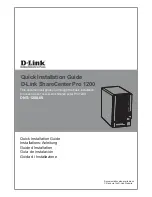
7
Installing and Setting Up the 9664 FrameSaver Unit
The following sections guide you through installation and setup of a FrameSaver unit.
It is assumed that the FrameSaver unit is configured for factory default settings at the
start of installation.
A typical multinational application is shown in the following illustration. This example
shows a network that includes FrameSaver units at the central site (e.g., the company’s
headquarters in City A) and the remote sites (e.g., branch offices in City B and City C).
User data PVCs provide LAN-to-LAN connectivity between the central site and the
remote sites. Depending upon your application, the central site may or may not need an
external DSU when accessing the frame relay network.
Frame
Relay
Router
Central Site
FrameSaver
9820 or 9128
NMS
Headquarters
in City A
Port NET
NT1
NET Port
Frame
Relay
Router
Remote Site
FrameSaver
9664
DLCI/EDLCIs:
100/0 User Data
100/2 Management Data
Branch Office
in City B
NTU
NET Port
Frame
Relay
Router
Remote Site
FrameSaver
9820-2M
Branch Office
in City C
DLCI/EDLCIs:
200/0 User Data
200/2 Management Data
Frame
Relay
Network
100
200
DLCI/EDLCIs:
100/0 User Data for City B
200/0 User Data for City C
100/2 Management Data for City B
200/2 Management Data for City C
00-16683
DSU
Nailed-Up
ISDN
From a network management perspective, the central site FrameSaver unit should be
configured for management from a Network Management System (NMS), through
either the attached router, as shown in the above figure, or through the Network
Operations Center (NOC) router (for management by the Network Service Provider).
Multiple management PVCs then connect the central site unit to the remote site units
using Paradyne’s proprietary PVC multiplexing method (embedded DLCIs).






































